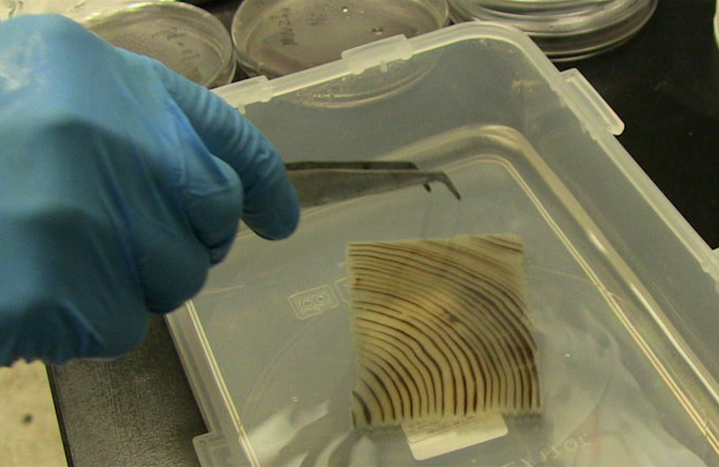
So how did they do it? Dr. Liangbing Hu, a materials scientist at the Unviersity of Maryland, and his team took a block of wood and boiled it in water, sodium hydroxide, and a few additional chemicals for around two hours in order to remove the organix substance lignin, which is responsible for wood’s distinctive coloring. Then, the team poured epoxy atop the newly transparent block, making it four to six times stronger than before.

“We were very surprised by how transparent it could go,” Hu told the New York Times. “This can really open applications that can potentially replace glass and some optical material.”
Transparent wood would be ideal for light emission, Hu says, because it maintains a series of natural channels that direct light better than plastic or glass are able to. “In traditional material, the light gets scattered,” he said. “If you have this waveguide effect with wood, more light comes into your house.”
Of course, as thrilling as this may be, the Maryland-based team recognizes the limitations of the technique — at least, thus far. They’ve yet to turn blocks larger than five inches by five inches clear, so unless you’re looking to create windows the size of your hand, you may not want to break down your current glass panes just yet. That said, the team is hard at work scaling their two-step process to address the size constraints, so this might not be a problem for too much longer.


